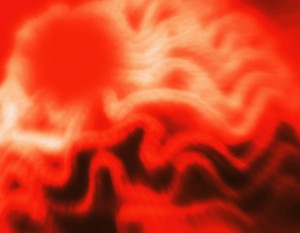Editorial: Investigations of Neural Imagining and Surgical Removal of Emotional Cortexes
Edward P. Muinn1, David G. Bolls,1 Felicity I. Killian1,2 and Diana Rohlman3
1Department of Neurology and Neurosurgery, 2Department of Radiology, 3Groom Lake Publishing Services, Groom Lake, Nevada, United States of America
Corresponding author: Felicity I. Killian, killianf@groomlakelab.edu
Felicity I. Killian received her Bachelors of Science degree in 1984 at the University of Pennsylvania, followed by her PhD at Stanford with dual majors in neurology and radiation. After five years in research, she received her medical degree from Brown University. In the past ten years she pioneered the surgical removal of emotional cortexes. This technique has successfully treated severe depression, schizophrenia and intermittent explosive disorder. Most recently it was exploited for a different purpose. The following article is published as presented by the underwriting author, Diana Rohlman (Groom Lake Publishing Services).
#
I began as a naïve, impetuous research doctor, convinced that I would make the world a better place than the one I entered thirty years ago. I was full of the dewy-eyed ambition that I now gleefully mock when I see it in the faces of new interns. Once, I too was hopelessly confident that I could make a difference. I can’t be too bitter; my work greatly advanced the field of mental health treatment, and for that I am profoundly grateful. But humans have an all-encompassing need to pervert that which is good and turn it to a darker purpose for which it was never designed. If you could remove the melancholy from a man, could you not also remove his happiness, his joy, his fear, his capacity to love, to hate, to empathize?
Such drastic and abhorrent thoughts never entered my optimistic mind. I wanted only to help, to create. Such work was the antithesis of all that I strove for. My work was designed to treat serious medical conditions, not to create human shells that would function in a perfect vacuum of emotion.
But once the thought had been presented, once my research was published and publicly available, it was only a matter of time. A person incapable of emotion, incapable of second-guessing orders–certain individuals and governments thrilled to the concept. Caught up in my academic bubble, religiously pursuing answers to scientific endeavors, I allowed myself to participate in the first trial of Neuronal Excision (NE).
Simply speaking, a patient is systematically stripped of all ability to experience emotion.
As a scientist, I cannot allow my emotions to influence my experiments or my results. But I am ethically and morally bound to consider the implications of my work. As a scientist, I am accustomed to writing my results in the dry, clinical rhetoric of my discipline. For the first time, I am leaving the safety of impartial words and didactic writing behind, to convey, not preach, the dangers of this new technique. By compiling the lab notes and surgical notes from that fateful surgery, we have constructed the full story of that day.

“She’s so young,” he murmured, looking at the tangled mass of nerves and tissue that comprised the girl’s brain, but seeing instead the ramifications of our work.
To read the rest of this story, check out the Mad Scientist Journal: Autumn 2013 collection.
Diana lives in the Pacific Northwest. She recently received her PhD in Toxicology from Oregon State University. She has been writing fiction since the age of fourteen. When not writing, she’s creating fun new ways to teach science, including using candy to teach the concepts of mass spectrometry.
Dawn Vogel has been published as a short fiction author and an editor of both fiction and non-fiction. Although art is not her strongest suit, she’s happy to contribute occasional art to Mad Scientist Journal. By day, she edits reports for and manages an office of historians and archaeologists. In her alleged spare time, she runs a craft business and tries to find time for writing. She lives in Seattle with her awesome husband (and fellow author), Jeremy Zimmerman, and their herd of cats. For more of Dawn’s work visit http://historythatneverwas.com/
Follow us online: